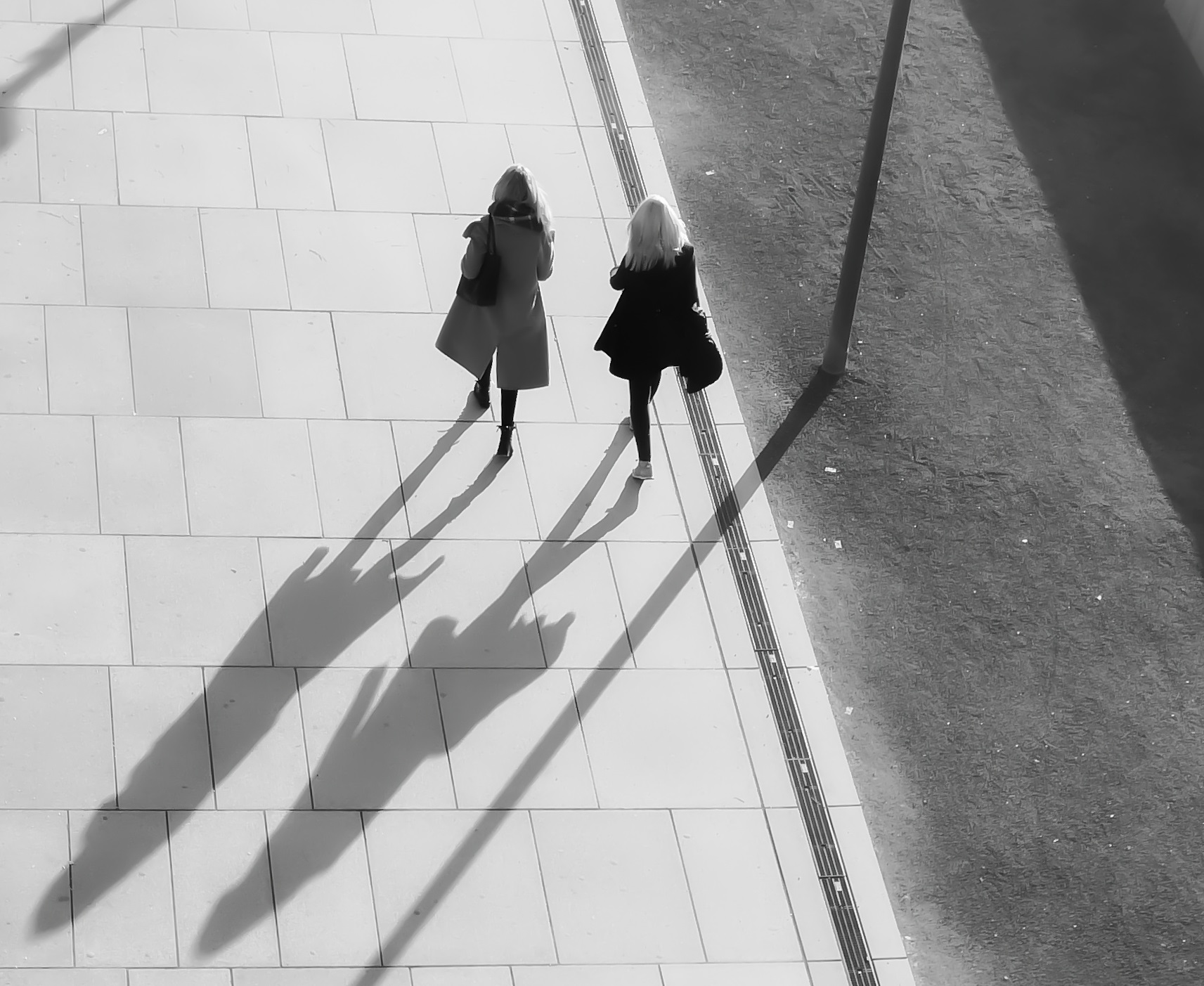Walking: Our Superpower

“Walking is not about getting from A to B, it is rather a creative act. It is a moment where we are left alone with ourselves, as well a rise to transform our society. It is the sole act of Homo Viator, who in every new step, realizes himself as a true part of the earth, who tries to rise despite the twisted body. Walking man frees himself from anxiety, envy and untangles the knots of fear and ties his very existence to the eternal hearth of the earth. We walk, we walk to tie this knot.” A Philosophy of Walking, Fredric Gros
I wanted to start this article with my favorite lines from Frederic Gros’s book A Philosophy of Walking. Because I am here with the intention of contributing to rehabilitate the right to walk in every sense.
I believe that we are not sufficiently aware of the great positive impact on our lives of something as simple as walking, which we know by heart and do. In fact, this article is a gentle invitation to realize this.
While the effect of walking on our physical health is a much talked about and proved, its effect on our creativity and psychological well-being is not emphasized enough, and especially its multidimensional effect on sustainable transportation is almost never talked about.
Walking is a healthy action
According to the Health, Daily Physical Activities, Bicycle Perception Practices research conducted by ADHOC in 2022 within the scope of the ETİ Yellow Bicycle Project1, although walking is mostly preferred for socialization, the average time spent walking is usually due to obligations. On average, people walk 22 minutes a day for work and 20 minutes for transportation. The time spent walking for social activities and health is limited.
However, being active in daily life is a must for living a healthy life. If there is something that someone who is busy in their daily lives and “does not have time” – which is our “excuse” – can easily include in their life, it is walking.
You’ve probably heard the advice of 10 thousand steps a day. It was derived from a Japanese marketing strategy, according to a study conducted by the Journal of the American Medical Association. In 1965, a Japanese company started selling pedometers and named it, meaning “10 thousand steps meter” in Japanese. According to the research, the roots of the “10 thousand steps” recommendation are based on this story.
Some centers recommend doing at least 30 minutes of moderate physical activity a day instead of 10 thousand steps a day and not being sedentary. To improve and protect your health in your daily life, “taking steps”, even if not 10 thousand steps at the beginning, and increasing over time to reach 10 thousand steps is a feasible goal that you can include in your daily life flow
“Above all, do not lose your desire to walk. Everyday, I walk myself into a state of well-being and walk away from every illness. I have walked myself into my best thoughts, and I know of no thought so burdensome that one cannot walk away from it. But by sitting still, & the more one sits still, the closer one comes to feeling ill. Thus, if one just keeps on walking, everything will be all right.”
― Søren Kierkegaard
In addition, most of us feel psychologically good while and/or after walking. Moreover, there are even some stereotyped expressions about this that have been ingrained in our language since time immemorial; like “go for a walk and you’ll feel better”, “go get some fresh air, it’ll do you good”. If you really shake yourself up, get up, make that decision, and go walking, it will definitely do good to you. Or, while you are already walking, after a while you will witness that this is good, you will feel better.
In studies, it has been stated that walking has a great effect on reducing anxiety and depression, it has been observed that patients receiving treatment for mental disorders have a decrease in mental problems such as depression, and its positive effects on memory as well as its benefits for Alzheimer’s disease have been revealed2.
What about its effect on creativity?
“Sit as little as possible; do not believe any idea that was not born in the open air and of free movement — in which the muscles do not also revel…”
– Friedrich Nietzsche
When we go for a walk, our heart beats faster, blood and oxygen reach not only the muscles but also all organs, including the brain. Regular walking develops new connections between brain cells, delays the normal brain tissue shrinkage that comes with aging, expands the volume of the hippocampus, and increases the levels of molecules that both stimulate the development of new neurons and transmit messages between each other. 3
Marily Oppezzo and Daniel Schwartz of Stanford University have published what is likely the first study to directly measure the way walking affects creativity. They had already come up with the idea for the research during a walk.
Research has shown that walking exponentially increases creative inspiration. They measured and compared the creativity levels of sitting people and walking people using Guilford’s Variable Use Test. It turns out that the creativity of a walking person is 60% higher than that of a sitting person.
In a series of four experiments, Oppezzo and Schwartz asked 176 college students to complete separate creative thinking tests while sitting, walking, on a treadmill, and while walking around campus. For example, in one test, volunteers had to suggest unusual uses for everyday objects like a button or a car tire. On average, students thought of four to six more different uses for objects, with students walking compared to students sitting. Another experiment required volunteers to think of a metaphor and produce an equivalent metaphor. 95% of those who walked and 50% of those who did not stand up at all passed the test. 4
We also have some concrete examples of this; It is known that the famous scientist Charles Darwin regularly walked on the track around his house called Downe House and thought while doing so. Similarly, Apple founder Steve Jobs is known for his “walking meetings.”
Don’t you have such moments from your own life?
Walking as a means of transportation
Let’s talk about the place(lessness) of walking, especially in the field of sustainable transportation. In sustainable transportation, pedestrian transportation and therefore walking, is not talked about as much as cycling, bicycle paths, public transportation, and their integration.
We have recently witnessed firsthand how little space walking has as a mode of transportation in the field of sustainable transportation. The 7 Information Days and Workshop series we organized in 7 regions within the scope of the “Turkey Sustainable Urban Transportation Network (KAVŞAK)” Project of which we are a partner, allowed us to determine Turkey’s needs and problems and to see the deficiencies in the field of sustainable transportation. We witnessed in these meetings that, unfortunately, walking as a means of transportation has not yet found the place it deserves.
If we can look at walking as a “sustainable transportation module”, it is inevitable that it will be possible to develop both a perspective on sustainable transportation and more applicable solutions in the context of climate change.
Because every minute we choose to walk, we consume less fossil fuel. When we walk, we reduce carbon dioxide emissions and our carbon footprint, prevent air pollution and support sustainability. In this way, we also contribute to the fight against the climate crisis.
On the other hand, there are regions where transportation is only possible by private vehicle and walking. While planning sustainable transportation in these regions, considering pedestrian transportation also makes it necessary to offer a model where walking is encouraged. It would be appropriate to present this model as a holistic study, from physical practices suitable for walking to communication campaigns explaining the importance of it.
According to the Health, Daily Physical Activities, Bicycle Perception Practices research conducted by ADHOC in 2022 within the scope of the ETİ Yellow Bicycle project, 20% of the society thinks that the district/neighborhood they live in is suitable for walking. Therefore, it would be an important goal to create approaches that encourage walking for those who hold this opinion and to create the perception of “walkable” neighborhoods and districts for the remaining percentage.
When my 4-year-old daughter, who was with me for a part of writing this article, asked me what I was writing about and gave examples of the benefits of walking, it came out of my mouth that she could think of walking as a “superpower” and we both liked this idea. Considering that we all have such a superpower, it might be a good idea to use it for both personal, social and environmental benefits, what do you think?
I wish a new year, where it will be a year in which we will question why we are not doing enough of an action that is as simple as walking and has such a big and comprehensive impact, and we can “walk”on this issue.
Yasemen Güray Karataş
Active Living Association
1ETİ Yellow Bike Project Health, Daily Physical Activities, Bicycle Perception Practices Research, 2022
2https://dergipark.org.tr/en/download/article-file/1475617
3https://www.newyorker.com/tech/annals-of-technology/walking-helps-us-think
4https://www.apa.org/pubs/journals/releases/xlm-a0036577.pdf


Bizi Takip Edin